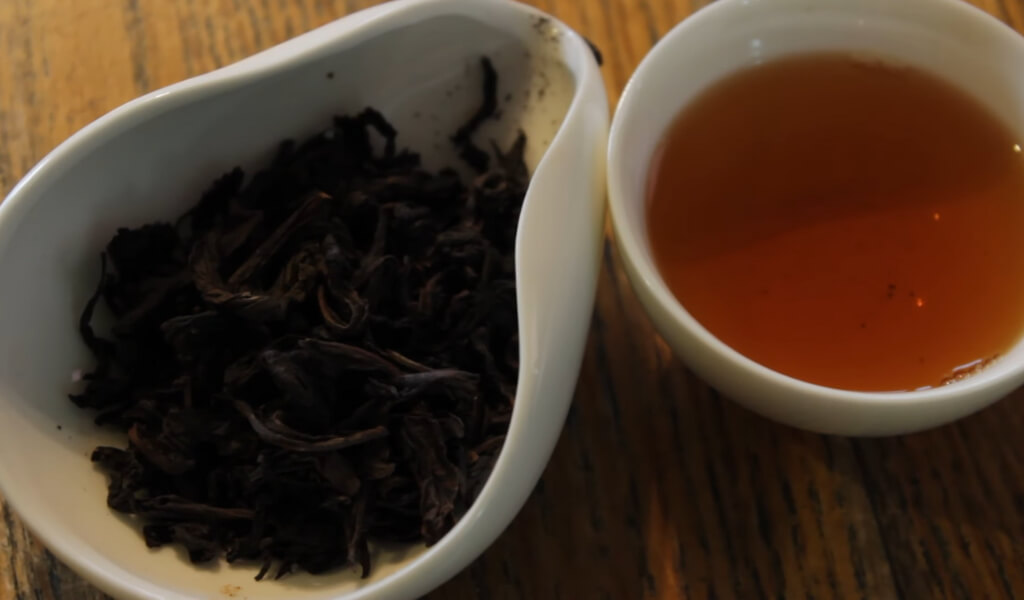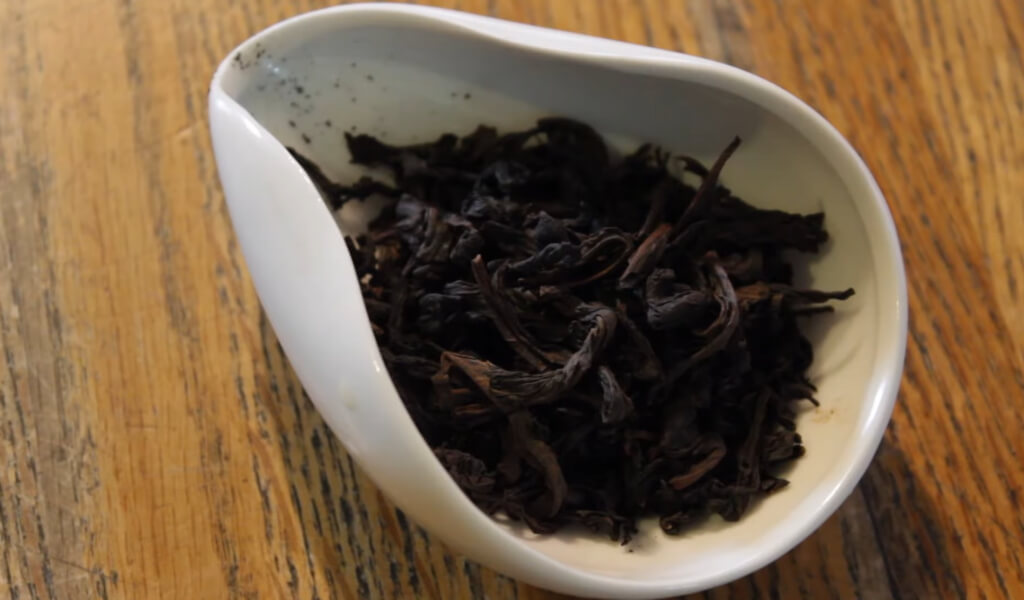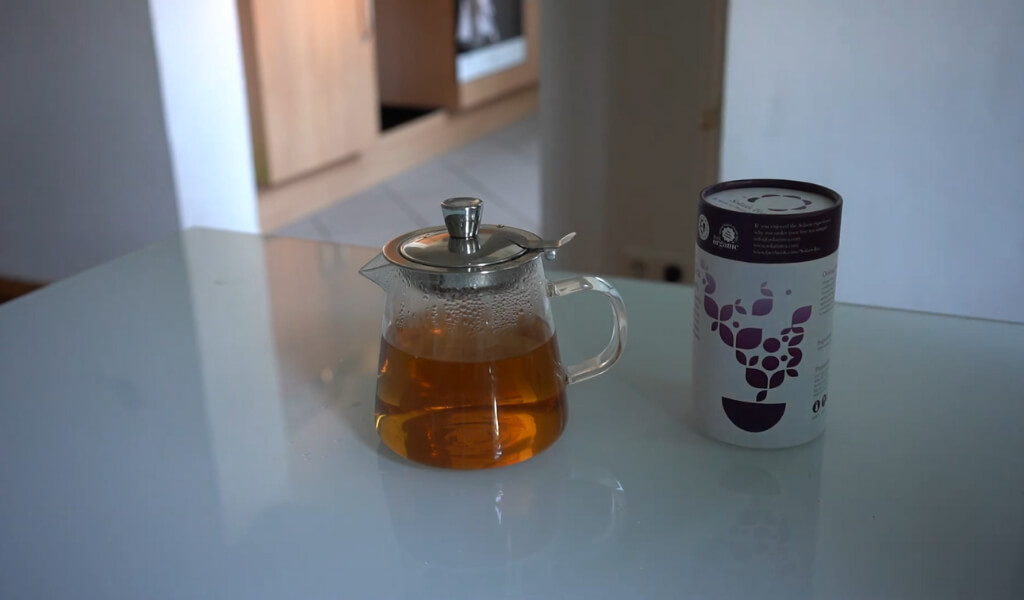I am delighted to introduce you to a Chinese Oolong tea that has captivated my heart: Shui Xian Tea. Also known as Shui Hsien, this magnificent tea has a charming name that translates to ‘water sprite’ or ‘narcissus’, painting a beautiful image of its ethereal and graceful nature.
Whenever I brew Shui Xian – Real “Rock Tea” (“Zheng Yang Cha”), I am mesmerised by the dark brown colour of the tea, which often reminds me of aged oak. But it is the unique flavours that stand out to me.
While Shui Xian is indeed remarkable, your choice of variety greatly influences your taste. Cheaper versions, commonly found in Chinese restaurants, often have a mildly smoky flavor, distinct from the premium Shui Xian types I previously mentioned. This smokiness adds a unique dimension when you’re seeking a departure from the usual.
Where To Buy Shui Xian Tea?
Hey there! It can sometimes take work to find top-notch tea varieties. Don’t worry! Try a speciality tea shop, or check out an online tea seller. I’m still trying to figure out where to start. No problem at all. Just scroll down, and you’ll find some of my favourite recommendations. Enjoy your tea hunt!
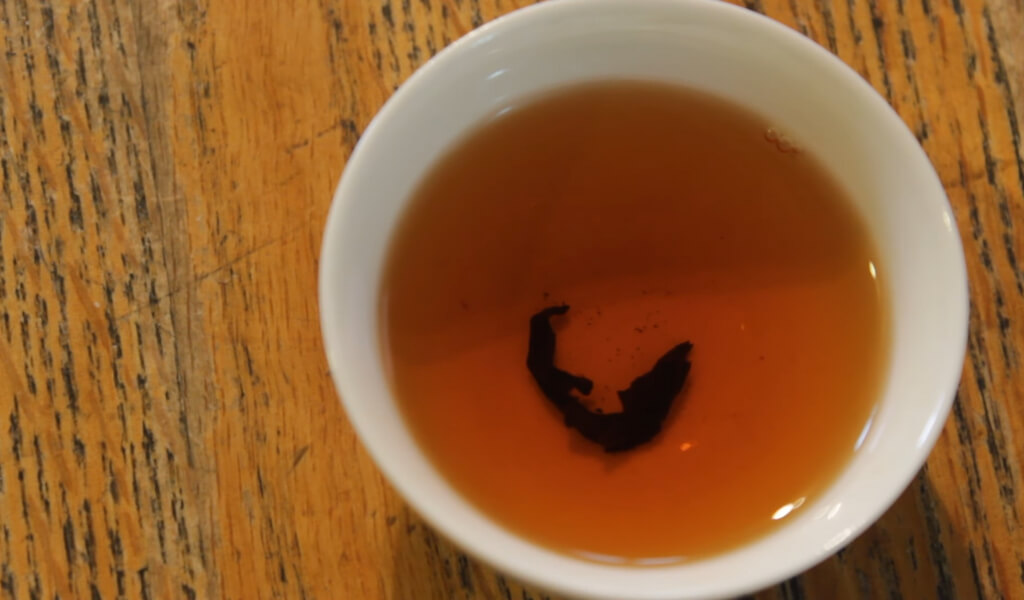
Once you’ve got this remarkable tea, it’s time to brew it. I’ll guide you through how to make Shui Hsien tea.
How To make Shui Hsien Tea?
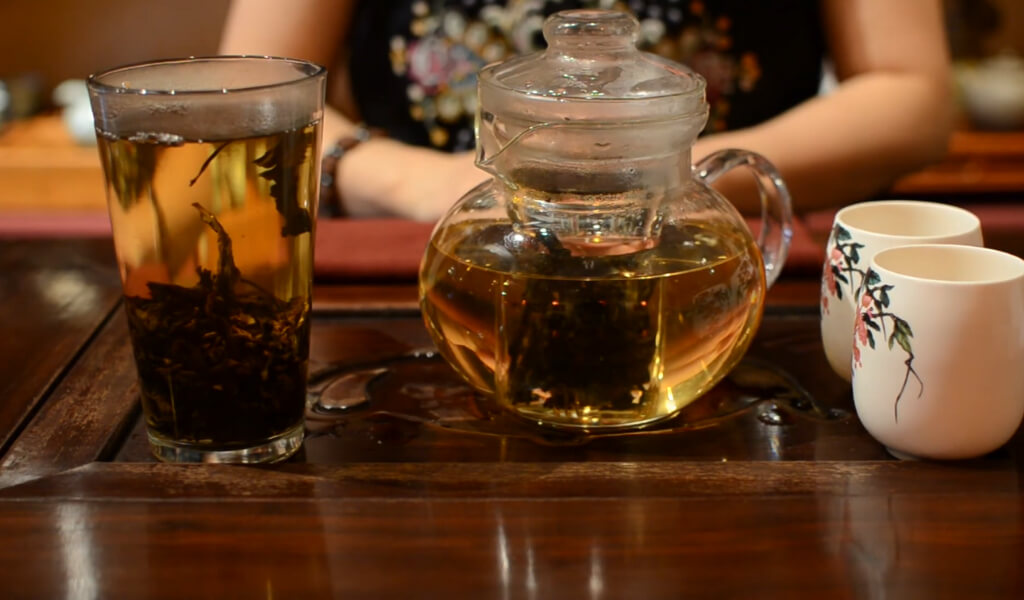
Hey! The steps I will share with you are mainly for brewing loose-leaf teas. If you’re using tea bags, just stick to the instructions on the box, and you’re ready.
The sweet spot for brewing temperature is around 90-95ºC (194-205ºF). That’s just a touch below boiling. To hit this range, boil your water with a trusty stove-top kettle and let it chill out for about 30 seconds.
Understanding the brewing process is key to a perfect cup. Let’s delve into the detailed brewing instructions.
Brewing Tips & Instructions
- Fill them approximately halfway with hot water to pre-warm your teapot and cup. Slightly tilt them to allow the water to touch the sides, then spin them to ensure complete internal wetness. Once done, discard the water.
- Deposit 3 teaspoons of tea leaves into your teapot. If employing a different receptacle, the ratio is 3 teaspoons per 8 oz. (236 ml) of water.
- Introduce water at a temperature of 90-95ºC (194-205ºF) into the teapot.
- Secure the teapot with its lid and leave it to infuse for 1 minute.
- Decant the tea into your teacups and relish your freshly brewed tea!
- A majority of tea varieties can yield 5-10 infusions. Prolong the infusion time by about 30 seconds for each subsequent brew. Your preference dictates the number of infusions, so feel free to experiment.
Use the recommended quantities as a starting point. Adjust tea leaves for stronger or milder flavor, and tweak steeping times accordingly.
Watch a useful video guide for Water Sprite tea from German Amazon. For US Amazon, I’m searching for the best option, but there are decent alternatives (see recommended products below).
Trust me, not all Shui Xian teas are created equal. Let’s discover some of the best Shui Xian teas you can try.
Best Shui Xian Teas To Consider
Premium Choice
My top pick for Shui Hsien is the Organic Shui Xian offered by Teavivre. It’s a fantastic tea and tops my list, given the limited availability of good quality Shui Xian teas outside Taiwan.
Most Accessible
Amazon is a popular choice for buying tea, but it lacks a variety of high-quality options, especially for Shui Xian tea. While Shui Xian is commonly found in Chinese restaurants, Amazon’s selection could be improved both in terms of variety and quality.
For those who prefer shopping from Amazon and are willing to try their options, consider this one from Goartea.
However, it’s important to note that the other two previously mentioned options surpass this quality.
More than a delightful beverage, Shui Xian tea has health benefits. Let’s look at what these are.
Read More:
- What is Tie Guan Yin Tea? Types, Benefits And Side Effects
- What makes Dancong Oolong tea so special?
- History of Alishan Oolong Tea
- What is Da Hong Pao Tea? Ultimate Instruction For Newbies
Health Benefits Of Shui Xian Tea
Narcissus tea is a source of fluorine, an essential trace element for the human body. A deficiency in fluorine could impact bone and dental health, and tea, as a natural beverage, contains a higher amount of fluorine. Additionally, the presence of caffeine in tea stimulates the central nervous system.
Tea contains components such as caffeine and theophylline, which can impede the reabsorption in renal tubules, functioning as a potent diuretic. This not only aids in urination and enhances kidney function but also expedites the excretion of endotoxins and waste from the body, thereby preventing kidney diseases and stone formation.
Tea’s alkaloids create a natural alkaline beverage that counters acidity and supports the body’s ideal pH balance. Tannin in tea fights bacteria, caffeine enhances stomach acid production, and aromatic oils aid digestion, promoting better gastrointestinal health.
Narcissus tea’s catechins can counteract harmful radioactive strontium, offering protection against urban radiation pollution. It’s aptly known as “the atomic age’s shield.”
Tea leaves, particularly green tea, are abundant in catechins, boasting a high activity of vitamin P, which enhances the body’s vitamin retention, lowers fat accumulation in the blood and liver, and maintains capillary resistance. Therefore, regular tea consumption is beneficial in preventing and treating hypertension, arteriosclerosis, and coronary heart disease.
The vitamin C in tea aids in reducing blood cholesterol levels, strengthening the toughness and elasticity of blood vessels. French and Japanese medical research corroborates tea consumption’s cholesterol-lowering and weight-reducing effects.
Tea, including vitamins B1, B2, folic acid, niacin, and vitamin C, among other vitamins, may not have high content, but regular tea consumption can contribute significantly to nutritional supplementation.
More Extent About Water Sprite Tea
Shui Xian, a Chinese oolong tea, is cultivated at an altitude of 800 meters in the Wuyi Mountain region of Fujian province, a territory famed for producing other renowned oolongs such as Dahongpao (Big Red Robe Tea). Notably, Shui Hsien is darker than other oolong teas originating from this locale and oolongs overall.
Its production involves larger, dark green leaves that undergo 40% to 60% oxidation and an intensified roasting process, contributing to its dark hue. The resultant brew is an orange-brown infusion, offering a mild yet nuanced flavor that leaves behind an orchid-like aftertaste long after consumption.
The term Shui Xian, sometimes spelled Shui Hsien in older texts, means “water sprite” or “water fairy,” and occasionally, it’s interpreted as “narcissus” or “sacred lily.” This tea’s history traces back to the Song Dynasty when it was discovered in a cave near Tai Lake known as Zhu Xian, meaning “prayers to the gods.” Due to its similar pronunciation, it was named Shui Xian, and alternative names like “narcissus” stem from its floral fragrance.
The name ‘Narcissus’ also carries an intriguing backstory. During Emperor Kangxi’s reign in the Qing Dynasty, a renowned individual from Fujian noticed a large tea tree growing adjacent to a temple. The temple’s earthen walls had exerted pressure on the tree, resulting in several twisted and misshapen trunks.
Ingeniously, he utilised this distortion to yield a unique, fragrant tea. In the Hokkien dialect, ‘water’ symbolises beauty; hence, the tea harvested from this beautifully affected tree on the fairy mountain was christened ‘Narcissus’. This evokes the image of blooming daffodils in early spring, harmonising with the tea’s name.
Thanks for https://spiriteadrinks.com/
And lastly, let’s tackle some FAQs to clear up any remaining questions you might have about Shui Xian tea.
FAQs
What flavor is Shui Xian tea?
Shui Xian tea offers a harmonious blend of sweet peach and honey, complemented by a slight mineral-rock flavor. Depending on the quality, some variants have a slightly burnt taste, a unique characteristic often found in affordable varieties usually served in Chinese restaurants.
How much caffeine is in Shui Hsien tea?
Shui Hsien, an oolong tea, typically contains moderate levels of caffeine. Specifically, it can have anywhere from 10 to 60 milligrams of caffeine per 8-ounce serving. The exact amount can vary based on factors like the maturity of the leaves and the brewing time.
How do you pronounce Narcissus tea?
Narcissus tea, another name for Shui Xian tea, is pronounced as “nar-si-sus”. It’s a Latin term referring to a genus of flowering plants, and in this context, it’s an alternate name for Shui Xian owing to the tea’s delicate and fragrant nature.
What is the best way to brew Shui Xian tea?
The traditional Gongfu style is the best way to brew Shui Xian tea. Start with pre-heating your teapot and cups with boiling water. Then, add the tea leaves to the pot, around 5-7 grams, for a 150ml teapot. Rinse the tea with boiling water quickly and discard the water. After the rinse, start your first infusion, pouring the water at 100 degrees Celsius and steeping it for 10-20 seconds.
Is Shui Xian tea good for the skin?
Shui Xian tea may offer some potential benefits for the skin due to its antioxidant properties, which can help protect the skin from oxidative damage. However, individual results may vary, and it’s essential to maintain a balanced skincare routine for optimal skin health.
Can I drink Shui Xian tea daily?
Shui Xian tea can be consumed daily in moderation, like most teas. It contains moderate caffeine levels, so if you’re sensitive to caffeine, consider your overall daily caffeine intake. Enjoying it daily can provide a consistent flavor experience and potential health benefits.
How should I store Shui Xian tea?
To store Shui Xian tea properly, keep it in an airtight container away from direct sunlight, moisture, and strong odors. Storing it in a cool, dark place, such as a pantry or tea tin, can help maintain its freshness and flavor.
Can Shui Xian tea be cold brewed?
Yes, Shui Xian tea can be cold brewed. Simply place tea leaves in cold water and refrigerate for several hours or overnight to achieve a refreshing cold-brewed tea with a milder flavor profile.
Is Shui Xian tea suitable for vegans?
Shui Xian tea is generally suitable for vegans as it is made from tea leaves without any animal-derived ingredients. However, it’s always advisable to check the specific product’s labeling or inquire with the manufacturer to ensure it meets vegan dietary preferences.
I’m Shanna, creator of Spiritea Drinks. I’m all about teaching people to grow their own food, tea, cook what they harvest, and eat with the seasons.

